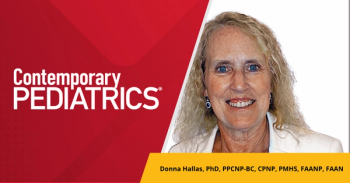
- May 2022
- Volume 39
- Issue 4
Assessment and treatment of eating disorders in adolescents
Pediatric health care providers understand that eating disorders are not lifestyle choices but life-threatening mental health conditions.
Among patients of all ages, anorexia nervosa (AN) has the second-highest mortality rate of all mental health conditions, after substance abuse.1 Both suicide and the physical effects of nutritional deficit are implicated. Mortality rates for other eating disorders, including bulimia and binge eating disorder, though lower than for anorexia, are still considerably higher than average.1
The Diagnostic and Statistical Manual of Mental Disorders (DSM-5) defines 4 categories of eating disorders: AN, bulimia nervosa (BN), binge eating disorder (BED), and avoidant/ restrictive food intake disorder, along with several noted as “other” or “atypical disorders.”2 Table 12 summarizes the diagnostic criteria for these categories. Body weight is among the diagnostic criteria for AN only; these patients may be underweight, within normal range, or overweight.
Prevalence
Analyses of prevalence vary widely in their findings.2 One meta-analysis found lifetime prevalence of AN from 1.7% to 3.6% for female patients and 0.1% for male patients; lifetime prevalence of BN for female patients was about 2.1%.3 BED, with reported prevalence rates of approximately 2% to 4%, is almost as common among male as female patients.2-4 Among adolescents aged 13 to 18 years, one study found prevalence rates of 0.3% for AN, 0.9% for BN, and 1.6% for BED.5
Long characterized as affecting primarily affluent White adolescent girls, eating disorders now affect people from lower socioeconomic groups, members of non-White ethnic groups, preteen children, and boys.2 LGBTQIA+ young people may be at particular risk.6
During the early months of the COVID-19 pandemic, hospitalizations for eating disorders doubled,7 and patients reported significant increases in unhealthy behaviors.8
Screening
Caregiver reports about a child’s weight or eating habits or clinical observation of unexpected weight changes are likely to alert the pediatrician to the possibility of an eating disorder. Routinely charting patients’ weight and height on a graph can help physicians immediately identify a possible problem.
Screening instruments for eating disorders are more practical for use in eating disorder centers than in most primary care settings. An alternative is a set of questions known as SCOFF9:
S Do you make yourself sick because you feel uncomfortably full?
C Do you worry you have lost control over how much you eat?
O Have you recently lost more than one stone (14 lb) in a 3-month period? (Stones is a British measurement.)
F Do you believe yourself to be fat when others say you are too thin?
F Would you say that food dominates your life?
Although the originators of SCOFF suggest that 2 or more yeses warrant further assessment, health care providers (HCPs) may want to follow up with even 1 affirmative answer.
History
Secrecy and denial characterize eating disorders. Patients should be questioned alone, away from their caregivers, to encourage honesty. Questions should be specific and pointed—not just “Do you exercise?” but “What kinds of exercise do you do? How many times per week? For how many minutes? How many [miles, reps, laps]?” Similarly, a detailed 24-hour diet history should be taken. Does the patient count calories, carbohydrates, fats, or other nutrients or ever eat in secret? Other categories of questions include the following2:
- Body image: “What is your ideal weight? How much of the day do you spend thinking about food or your body?”
- Binge eating and purging: “Do you ever binge? On what foods and how often? Do you ever vomit? How often? Do you use laxatives, diuretics, diet pills, or caffeine? How often?”
- Reproductive health: For girls: “When was your first and last period? Are you regular?” For boys and girls: “How is your sex drive?”
- Psychiatric health: “How is your mood? Do you feel anxious or depressed? Have you ever harmed yourself or thought about it? Have you had prior therapy?”
- Substance use: “Have you ever used any drugs? Have you experienced any blackouts?”
- Family history (ask caregiver): “Does anyone in the family have a history of an eating disorder, obesity, or dieting or a history of psychiatric illness?” In addition, the pediatrician should interview caregivers separately to get supplemental history information. Parents are much more likely than patients to be forthcoming with accurate information.
The difference between normal adolescent eating behaviors and disordered eating may be subtle. Many teenagers skip meals (especially breakfast), occasionally binge, or sometimes feel dissatisfied with their bodies. Frequent deprivation, bingeing, purging behaviors, secrecy around eating, or dissatisfaction around eating, are danger signs.
Depending on the patient’s initial answers, the HCP may screen for depression, anxiety, or other psychiatric conditions that are often comorbid with eating disorders.
Physical examination
Imbalance between the body’s needs and nutritional intake affects nearly all body systems. Table 2 highlights some physical effects of eating disorders. Heart health is a significant factor, so the physician may order an electrocardiogram (ECG). Bradycardia is the most common arrhythmia and finding in patients with AN.10,11 Clinicians may be inclined to attribute a low heart rate to an “athletic heart,” but bradycardia due to starvation is a potentially lethal condition.
Laboratory tests rule out diabetes, thyroid disease, anemia, and other physical causes and also document the extent of physical damage. Checking electrolytes is important. One of the most important tests is the phosphorus level. Medical complications can include depleted adenosine triphosphate, which affects cardiac function and can lead to sudden death.12,13
Emergency hospitalization
Patients with AN, in particular, may be in immediate danger of severe complications. Presence of any one of the following symptoms indicates the need for immediate medical hospitalization for refeeding2,14:
- Heart rate less than 50 beats per minute (bpm) while awake; less than 45 bpm while asleep
- Systolic pressure less than 90/45 mm Hg
- Orthostatic changes: decrease in blood pressure of more than 20 mm Hg systolic or 10 mm Hg diastolic; heart rate increase of more than 20 bpm
- ECG abnormalities: Prolonged corrected QT interval or other arrhythmia
- Syncope
- Temperature less than 96 °F (35.6 °C)
- Electrolyte abnormalities
- Uncontrollable binge eating and purging
- Dehydration
- Suicide risk
- Less than 75% of expected body weight
- Failed outpatient management
- Acute weight loss and food refusal
Communication
Today’s young people typically know what anorexia and bulimia are. When asked screening questions, the patient understands what the clinician is getting at but is likely to be in denial.
Education can start during the screening interview: “Here’s what concerns me when you tell me these things. You’re taking in less energy than your body is expending, and that’s affecting your physical health. Your blood pressure is low. I’m worried that you could pass out while you’re playing your sport or driving.” Sharing weight numbers or commenting on the patient’s thinness may backfire because the patient is likely to view alarming weight loss as a positive development.
In contrast, weight trends, particularly charted on a graph, can help the HCP communicate the seriousness of the problem to the caregivers. Clinicians should share conclusions from the history and the physical exam with patients and caregivers separately and then bring them together to talk about next steps. Both patients and caregivers need to understand, for example, that a broad array of tests is necessary because disordered eating affects a broad array of body systems.
If it is safe to send the patient home, the practitioner can enlist the caregivers to start addressing the eating disorder. Patients who are severely malnourished or underweight or have severe restricting or purging behaviors may need to stop exercise until they have developed a healthier relationship with food. Parents may need to take the lead on preparing meals and monitor consumption.
Treatment
Eating disorders are mental health conditions. In addition to helping families with practical matters such as meal plans, the pediatrician must link the patient and family with mental health support. Treatment of eating disorders requires a care team consisting of, at minimum, 3 professionals:
- The HCP arranges care and assesses medical status.
- A dietitian works with the patient and family to determine goal weight and provide an individualized nutrition plan.
- A mental health therapist guides family-based therapy, a first-line mental health treatment with established effectiveness.2,15 Cognitive behavioral therapy or dialectical behavioral therapy may also be used.
Psychotropic medications are indicated for comorbid mood disorders. The FDA has approved fluoxetine for treating BN.2 Otherwise, evidence on the use of medications to treat eating disorders is mixed and often based on studies in adults.2
Treatment goals, beyond any medical stabilization requiring im- mediate hospitalization, are to16,17:
- restore the patient to a healthy weight;
- restore healthy eating patterns;
- treat physical complications;
- address dysfunctional thoughts, feelings, and beliefs;
- address affect and behavioral regulation;
- enlist family support; and
- prevent relapse.
Medical concerns associated with the first stages of recovery include refeeding syndrome and hypermetabolism.16 Refeeding syndrome can occur when nutrients, especially carbohydrates, are reintroduced after starvation. The delivery of glucose leads to increased insulin and rapid uptake of glucose and electrolytes. Low serum concentrations cause fluid retention; nausea or diarrhea may result from adaptation of atrophied gut mucosa and impaired pancreatic function; carbon dioxide production and oxygen consumption increase. Health professionals should introduce nutrition slowly, monitor electrolytes closely and supplement when indicated, and monitor weight intake and outputs.16
The mechanisms of hypermetabolism are less well understood, but an increase in metabolism during refeeding makes weight gain difficult. Patients may require at least 3000 to 4000 calories a day to meet minimum weight gain goals. The effect can last for months, but metabolism does eventually stabilize.
Outpatient treatment consisting of an hour a week of mental health therapy and regular pediatric visits is beneficial only for patients whose condition has been caught early—typically, before any weight change. Most patients need more support. Treatment options include the following:
- Intensive outpatient program: 3 to 5 hours, 3 to 5 days per week
- Partial hospitalization: 6 to 10 hours, 5 to 7 days per week
- Residential treatment: 24-hour supervision
Pediatric practices should have a regularly updated list of treatment centers that includes treatment models, specializations, and patient populations. Most centers work with a few insurers, which rarely include public insurance programs. Insurers often cover less treatment time or in- tensity than is clinically indicated.
Families are often reluctant to send their child away for treatment. If residential treatment is indicated and a bed is available, HCPs can talk with the parents about the severity of the disease and how much more likely the child is to recover with 24-hour support.
Caregivers are the key to the success of any mode of treatment. The family’s trusted pediatric health care provider is in a unique position to enlist their support. HCPs can reassure caregivers that, although their child’s illness is serious, a team of professionals will partner with them to address the problem.
BIO
Jasmine Reese is director of the Adolescent and Young Adult Specialty Clinic at Johns Hopkins All Children’s Hospital in St Petersburg, Florida. As a member of the faculty of
References
1. Chesney E, Goodwin GM, Fazel S. Risks of all-cause and suicide mortality in mental disorders: a meta-review. World Psychiatry. 2014;13(2):153-160. doi:10.1002/wps.20128
2. Hornberger LL, Lane MA; Committee on Adolescence. Identification and management of eating disorders in children and adolescents. Pediatrics. 2021;147(1):e2020040279. doi:10.1542/peds.2020-040279
3. Lindvall Dahlgren C, Wisting L, Rø Ø. Feeding and eating disorders in the DSM-5 era: a systematic review of prevalence rates in non-clinical male and female samples. J Eat Disord. 2017;5:56. doi:10.1186/s40337-017-0186-7
4. Marzilli E, Cerniglia L, Cimino S. A narrative review of binge eating disorder in adolescence: prevalence, impact, and psychological treatment strategies. Adolesc Health Med Ther. 2018;9:17-30. doi:10.2147/AHMT.S148050
5. Swanson SA, Crow SJ, Le Grange D, Swendsen J, Merikangas KR. Prevalence and correlates of eating disorders in adolescents. Results from the national comorbidity survey replication adolescent supplement. Arch Gen Psychiatry. 2011;68(7):714-723. doi:10.1001/archgenpsychiatry.2011.22
6. Watson RJ, Adjei J, Saewyc E, Homma Y, Goodenow C. Trends and disparities in disordered eating among heterosexual and sexual minority adolescents. Int J Eat Disord. 2017;50(1):22–31. doi:10.1002/eat.22576
7. Asch DA, Buresh J, Allison KC, et al. Trends in US patients receiving care for eating disorders and other common behavioral health conditions before and during the COVID-19 pandemic. JAMA Netw Open. 2021;4(11):e2134913. doi:10.1001/jamanetworkopen.2021.34913
8. Termorshuizen, JD, Watson, HJ, Thornton, LM, et al. Early impact of COVID-19 on individuals with self-reported eating disorders: a survey of ~1,000 individuals in the United States and the Netherlands. Int J Eat Disord. 2020;53:1780-1790. doi:10.1002/eat.23353
9. Luck AJ, Morgan JF, Reid F, et al. The SCOFF questionnaire and clinical interview for eating disorders in general practice: comparative study. BMJ. 2002;325(7367):755-756. doi:10.1136/bmj.325.7367.755
10. Portilla MG. Bradycardia: an important physical finding in anorexia nervosa. J Ark Med Soc. 2011;107(10):206-208.
11. Yahalom M, Spitz M, Sandler L, Heno N, Roguin N, Turgeman Y. The significance of bradycardia in anorexia nervosa. Int J Angiol. 2013;22(2):83-94. doi:10.1055/s-0033-1334138
12. Håglin L. Hypophosphataemia in anorexia nervosa. Postgrad Med J. 2001;77:305-311. doi:10.1136/pmj.77.907.305
13. Mehanna HM, Moledina J, Travis J. Refeeding syndrome: what it is, and how to prevent and treat it. BMJ. 2008;336(7659):1495-1498. doi:10.1136/bmj.a301
14. Golden NH, Katzman DK, Sawyer SM, et al. Society for Adolescent Health and Medicine. Position paper of the Society for Adolescent Health and Medicine: medical management of restrictive eating disorders in adolescents and young adults. J Adolesc Health. 2015;56(1):121-125. doi:10.1016/j.jadohealth.2014.10.259
15. Rienecke RD. Family-based treatment of eating disorders in adolescents: current insights. Adolesc Health Med Ther. 2017;8:69-79. doi:10.2147/AHMT.S115775
16. Rome ES, Strandjord SE. Eating disorders. Pediatr Rev. August 2016;37(8):323-336. doi:10.1542/pir.2015-0180
17. National Collaborating Centre for Mental Health. Eating Disorders: Core Interventions in the Treatment and Management of Anorexia Nervosa, Bulimia Nervosa and Related Eating Disorders. British Psychological Society; 2004.
Articles in this issue
over 3 years ago
Does diet really play a role in acne?over 3 years ago
The business of being a pediatricianover 3 years ago
Telehealth for pediatric well visits: Sometimes the best optionover 3 years ago
Diagnostic testing for SVT usually can be skippedNewsletter
Access practical, evidence-based guidance to support better care for our youngest patients. Join our email list for the latest clinical updates.














